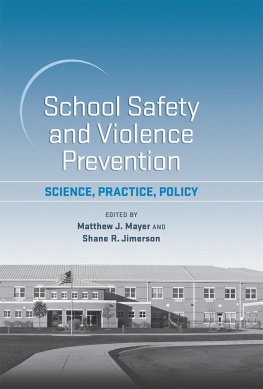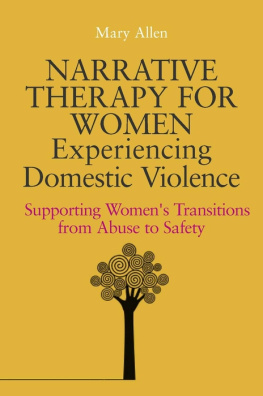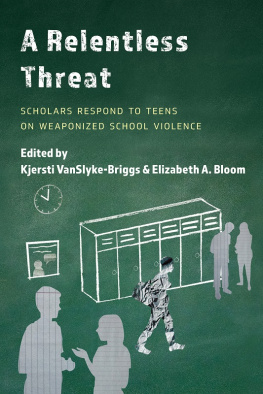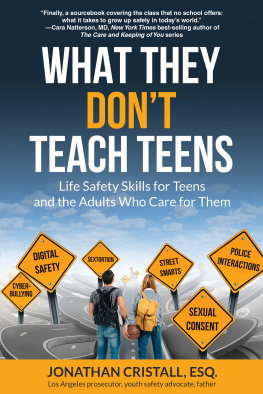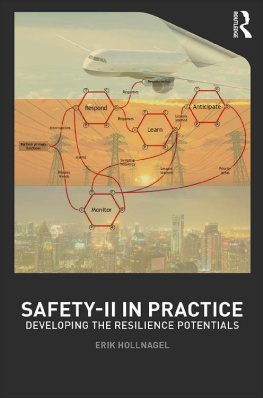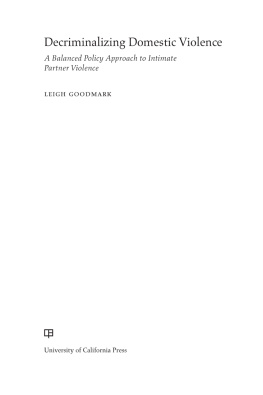Copyright 2019 by the American Psychological Association. All rights reserved. Except as permitted under the United States Copyright Act of 1976, no part of this publication may be reproduced or distributed in any form or by any means, including, but not limited to, the process of scanning and digitization, or stored in a database or retrieval system, without the prior written permission of the publisher.
Electronic edition published 2019.
ISBN: 978-1-4338-2941-3 (electronic edition).
The opinions and statements published are the responsibility of the authors, and such opinions and statements do not necessarily represent the policies of the American Psychological Association.
Cover Designer: Anne C. Kerns, Anne Likes Red, Inc., Silver Spring, MD
Names: Mayer, Matthew J., editor. | Jimerson, Shane R., editor.
Title: School safety and violence prevention : science, practice, policy / edited by Matthew J. Mayer and Shane R. Jimerson.
Description: First edition. | Washington, DC : American Psychological Association, 2019. | Includes bibliographical references.
Subjects: LCSH: SchoolsSafety measures. | School violencePrevention. | School environmentPsychological aspects.
Classification: LCC LB2864.5 .S355 2019 | DDC 371.7/82dc23 LC record available at https://lccn.loc.gov/2018003571
A CIP record is available from the British Library.
CONTRIBUTORS
Ron Avi Astor, PhD, University of Southern California, Los Angeles
George G. Bear, PhD, University of Delaware, Newark
Rami Benbenishty, PhD, Bar-Ilan University, Ramat Gan, Israel
Jessika H. Bottiani, MPH, PhD, University of Virginia, Charlottesville
Catherine P. Bradshaw, MEd, PhD, University of Virginia, Charlottesville
Dewey Cornell, PhD, University of Virginia, Charlottesville
Danielle Dougherty, PhD, University of California, Santa Barbara
Erin Dowdy, PhD, University of California, Santa Barbara
Allison B. Dymnicki, PhD, American Institutes for Research, Washington, DC
Dorothy L. Espelage, PhD, University of Florida, Gainesville
Albert D. Farrell, PhD, Virginia Commonwealth University, Richmond, VA
Erika Felix, PhD, University of California, Santa Barbara
Daniel J. Flannery, PhD, Case Western Reserve University, Cleveland, OH
Michael J. Furlong, PhD, University of California, Santa Barbara
Anna Heilbrun, MA, University of Virginia, Charlottesville
Jun Sung Hong, PhD, Wayne State University, Detroit, Michigan, and Sungkyunkwan University, Seoul, South Korea
Francis Huang, PhD, University of Missouri, Columbia
Shane R. Jimerson, PhD, University of California, Santa Barbara
Jason Katz, PhD, American Institutes for Research, Washington, DC
Evgeny Klochikhin, PhD, American Institutes for Research, Washington, DC
Matthew J. Mayer, PhD, Rutgers, The State University of New Jersey, New Brunswick
Maury Nation, PhD, Vanderbilt University, Nashville, TN
Amanda Nickerson, PhD, University at Buffalo, The State University of New York
Lindsey OBrennan, PhD, University of South Florida, Tampa
David M. Osher, PhD, American Institutes for Research, Washington, DC
Tracey G. Scherr, PhD, University of WisconsinWhitewater
Jill Sharkey, PhD, University of California, Santa Barbara
Joni W. Splett, PhD, University of Florida, Gainesville
Jeffrey R. Sprague, PhD, University of Oregon, Eugene
Adam Voight, PhD, Cleveland State University, Ohio
Mark Weist, PhD, University of South Carolina, Columbia
Sara A. Whitcomb, PhD, University of Massachusetts at Amherst
Sandra Williamson, MEd, American Institutes for Research, Washington, DC
Chunyan Yang, PhD, University of California, Santa Barbara
THE IMPORTANCE OF SCHOOL SAFETY AND VIOLENCE PREVENTION
MATTHEW J. MAYER AND SHANE R. JIMERSON
As school safety periodically takes center stage in the public arena because of media coverage of horrific events, there is often a predictable array of simplistic and sometimes sensational pronouncements on how to prevent school violence. Suggestions that may sound appealing on the surface but lack empirical support have included measures such as implementing zero tolerance policies with severe penalties, mandating gun-free zones, and arming teachers and other school staff members. This book focuses on more complex issues that inform possible solutions, drawing on a transdisciplinary research base and spanning topics including, but not limited to, educational administration, schoolwide prevention programming, classroom management, academic curriculum and instruction, socialemotionalbehavioral issues, ecologies of the student, and transactional developmental processes (Sameroff, 2000).
This introductory chapter provides a background and framework for understanding subsequent chapters. It begins by highlighting the detrimental effects of school violence, including student outcomes associated with school violence, disruption, and bullying. It then argues that a transdisciplinary, data-driven approach is needed to effectively address school violence. In particular, prevention and intervention practices must use logic models and theories of change to target the contributing factors and foundational processes associated with school violence. Researchers, policymakers, and practitioners must collaborate to bridge the research-to-practice gap on this important issue. The chapter concludes with a brief road map of the book.

